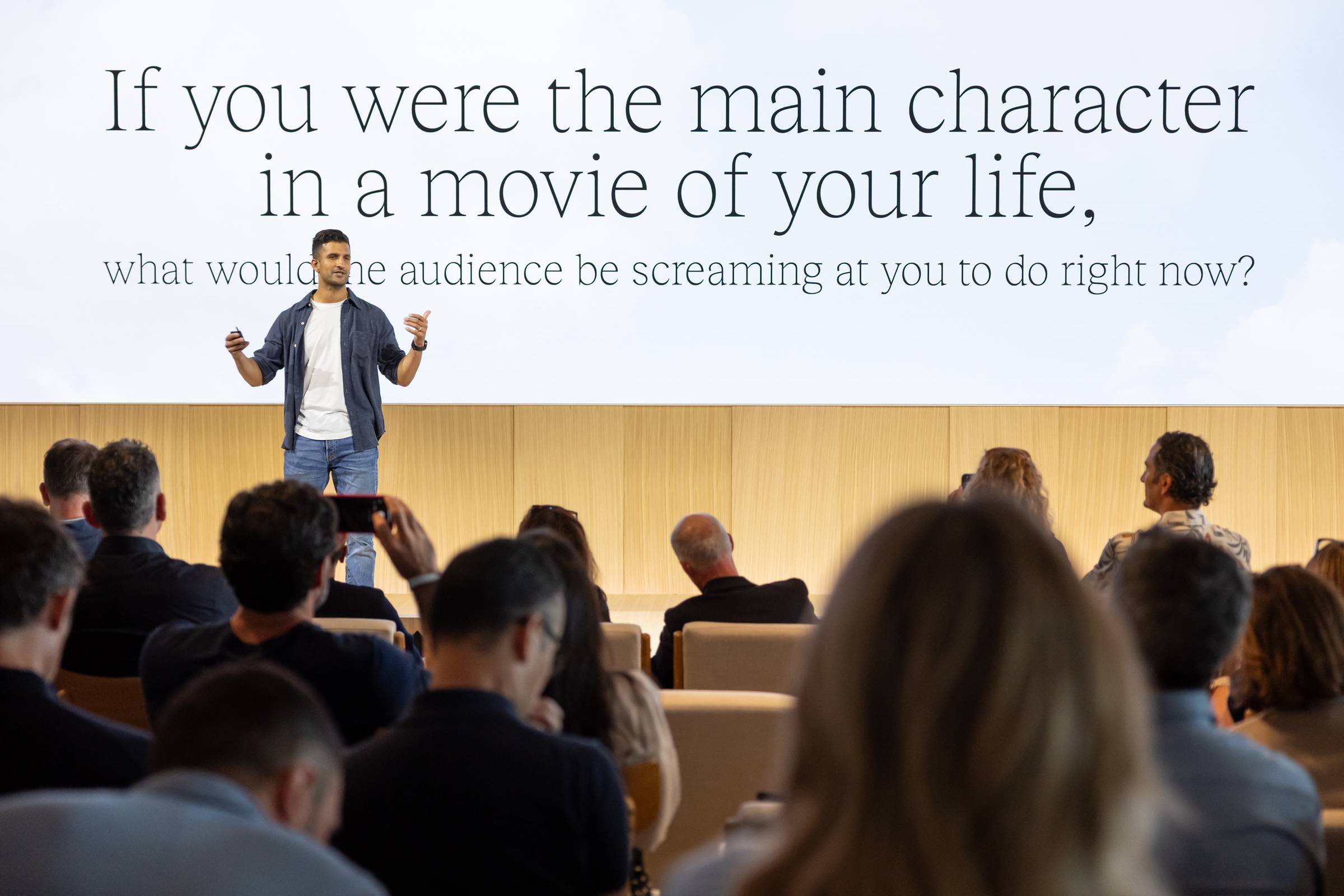The Public Speaking Guide
Today at a Glance
What’s a Rich Text element?
The rich text element allows you to create and format headings, paragraphs, blockquotes, images, and video all in one place instead of having to add and format them individually. Just double-click and easily create content.
Static and dynamic content editing
A rich text element can be used with static or dynamic content. For static content, just drop it into any page and begin editing. For dynamic content, add a rich text field to any collection and then connect a rich text element to that field in the settings panel. !
- ml;xsml;xa
- koxsaml;xsml;xsa
- mklxsaml;xsa
How to customize formatting for each rich text
Headings, paragraphs, blockquotes, figures, images, and figure captions can all be styled after a class is added to the rich text element using the "When inside of" nested selector system.

A few weeks ago, I had the opportunity to speak at Google Zeitgeist, an extraordinary annual event hosted by Google for their top customers and partners.
Just before I took the stage—in a beautiful room the team had custom built at the venue—I caught myself reflecting on how unlikely this moment would have seemed just a few years ago.
You see, I spent most of my life as an extremely nervous public speaker.
I had frozen under the spotlight multiple times in my school and early career years. My heart would start racing, dread would creep in, my throat would tighten, and my mind would go completely blank.
And yet here I was, about to confidently deliver a talk to a room full of the CEOs and global thought leaders I’d watched, read, and admired my entire life.
I had transformed from a nervous speaker into someone who had built a 7-figure business around speaking.
In today’s piece, I want to share 7 simple strategies that created that transformation from then to now.
No matter where you are on your speaking journey, these strategies will help you prepare, perform, and speak with confidence when it matters most.
Part 1: Prep Strategies
Strategy 1: Study Your Characters
You have access to the best speaking coaches in the world at the click of a button.
Identify 3-5 speakers you admire. They can be politicians, business leaders, comedians, motivational coaches, whatever.
Go on YouTube and find videos of each one delivering a speech. Slow down the playback speed and take notes.
Pay attention to the following:
- How are they structuring their talk?
- What is the pacing of their words? When are they pausing and when are they accelerating?
- When are they raising their voice? When are they lowering it?
- Note their movement on the stage. How are they gesturing?
- How are they engaging with the audience?
By studying the best, you naturally move to embody the traits you've identified.
Strategy 2: Perfect Your Lego Blocks
I used to try to memorize the content of a talk word-for-word.
The memorization feels like a protective wall to shield you from your fears of freezing. You plan to recite it and effectively disassociate from the act itself.
Unfortunately, I found (and observed) that memorization often has the opposite effect.
When you memorize material, one tiny slip-up can throw you off. You only know the material in one fixed, linear trajectory, so you're unable to adapt.
All it takes is one glitch in the slides, one off-track question from the audience, or one slight stumble in your opener and all of your preparation flies out the window.
My new approach is different:
Build Lego Blocks for the talk. These are key moments, such as the opening, transitions, and punchlines. Perfect these lego blocks.
The connective tissue between the Lego Blocks can be practiced more naturally. The general content of the connective tissue will remain the same, but the exact way you say it may change a bit each time.
With a Lego Block approach, you can practice the speech in segments rather than sequentially.
This may seem contrarian, but it will make you more dynamic if things don't go perfectly according to plan.
Strategy 3: Practice in Zone 2
Practice your delivery while engaged in a light cardio activity that brings your heart rate into a Zone 2 range (an elevated but still conversational pace).
This could be done during a:
- Slow jog
- Brisk walk
- Moderate hike
- Stationary bike ride
The logic here is simple: When you get nervous during a talk, your heart rate starts to rise. The problem for most people (my younger self included!) is that you aren’t prepared to deliver your talk in an elevated heart rate condition.
In other words, your practice was not aligned with the conditions of the real game.
The Zone 2 practice session fixes that: You prepare while in the elevated heart rate state that will characterize the real game, so when the moment comes, you know what it feels like.
You’re ready for it.
It’s a weird trick—and it may feel uncomfortable at first—but trust me, it just plain works.
Part 2: Pre-Stage Strategies
Strategy 4: Reset Your Stress (Scientifically)
Just before I walk on stage, I use science to reset my stress levels.
The Physiological Sigh is a remarkably effective, science-backed technique to quickly eliminate stress.
It’s a breath pattern marked by a double-inhale that is immediately followed by a long exhale. You do it naturally when levels of carbon dioxide in your bloodstream get too high. It creates a relaxing sensation by releasing a lot of carbon dioxide very fast.
Here's how it works:
- Double-inhale through your nose
- Long exhale through your mouth
- Repeat 2-3x
After my 2-3 reps of the Physiological Sigh, I recite a very quick mantra:
"Leave them better than you found them."
For me, the mantra serves to center my mindset on service. I am there to serve. To leave the listeners better than I found them. It's not about me, it's about them.
Part 3: On-Stage Strategies
Strategy 5: Start Big
The first minute of the talk is essential. This is where you can create (or destroy) the momentum that carries with you throughout the session.
Use big, bold, body-opening gestures during the first minute. I've found that doing so opens you up, builds your confidence, and creates early momentum.

P.S. This may be my personal adaptation of Amy Cuddy's much-debated "power pose" research.
Strategy 6: Find Your "Friendlies"
There are always a few people in the audience who are 10x more engaged than the rest of the crowd.
They are deeply present. They make eye contact with you, smile, nod at your key points, and laugh at your jokes.
Find those "friendlies" in the first few minutes.
During the talk, if you ever need a bit of a confidence boost or positive affirmation, move your gaze to them.
Those friendlies are like your charging stations: Make quick pit stops when you need that boost and then keep going.
Strategy 7: Manage the Freeze
For our last strategy, let's face a reality:
Sometimes, no matter how much you prepare, you'll freeze.
I've had full on freeze moments on live national television and during stage talks in front of thousands of people in the last six months.
But I'm willing to bet I was the only one who noticed, because I have a strategy to manage these freezes.
When I feel that blankness, I take an inhale and recenter on one thing:
I know this stuff. I could teach this to a friend in my sleep. So let's do that.
You manage the freeze by leaning into it, not fighting it.
Even if I'm slightly off script or taking a winding route, I appear natural, because I'm talking about these topics as I would to a friend.
Master the Spotlight
The Spotlight Effect is a common psychological phenomenon where we overestimate the degree to which other people are noticing or observing our actions, behaviors, appearance, or results.
Public speaking is one of the moments when the Spotlight Effect is the most pronounced (and potentially crippling).
In fact, a number of surveys have found that people rank public speaking ahead of death on a list of their greatest fears.
But confident public speaking is a critical skill for your career and life. And fortunately, it's a muscle that you can work to build.
Use these 7 simple strategies to increase your confidence and perform as the best version of yourself.
Give them a shot and let me know what you think!
P.S. I’ve done talks for Google, Meta, Amazon, Goldman Sachs, Fidelity and many more. If your organization is interested in booking me for a speaking engagement, please fill out the form here with additional information!















